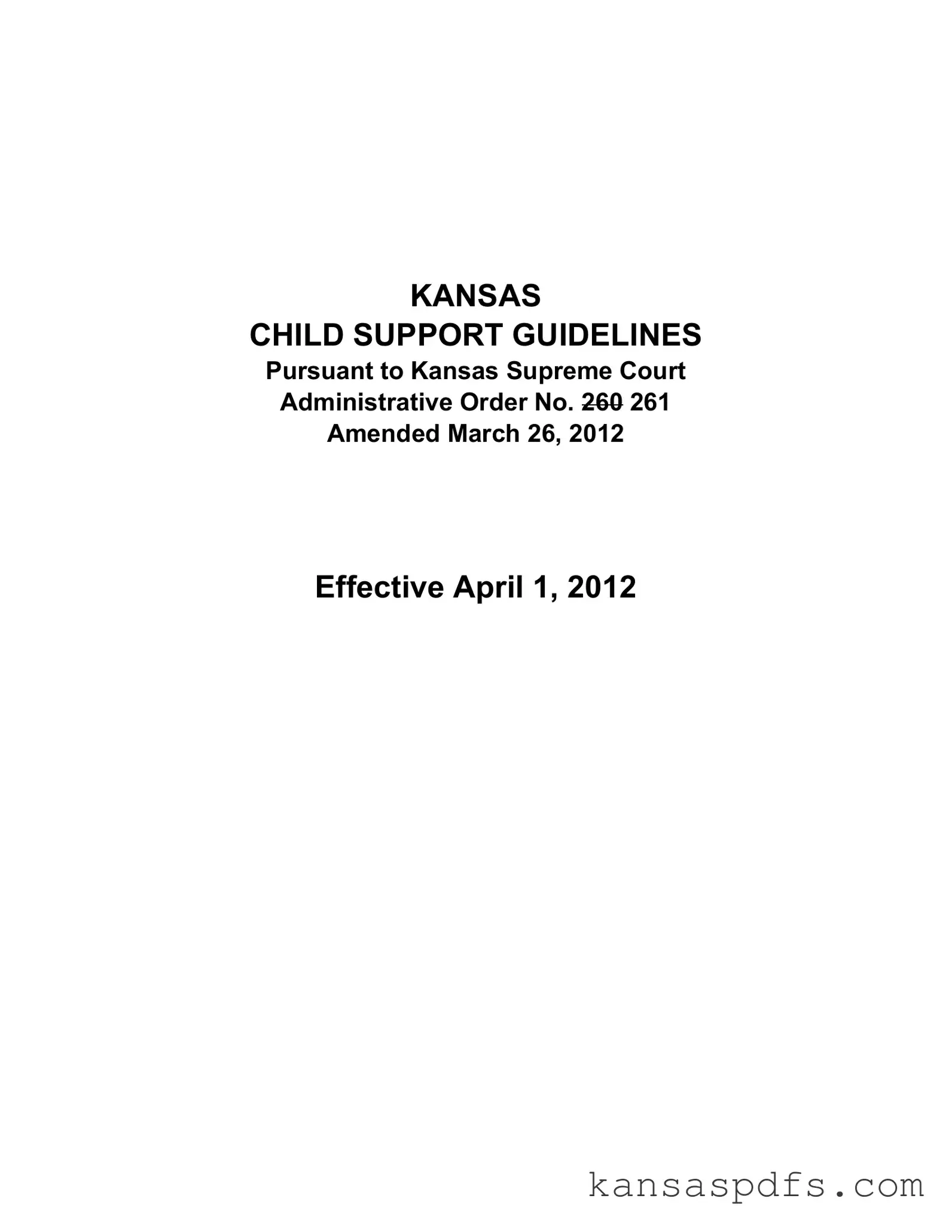What are the Kansas Child Support Guidelines?
The Kansas Child Support Guidelines serve as the foundation for setting and reviewing child support orders within the state. They are adhered to by judges and hearing officers in both litigated and agreed-upon cases. These guidelines aim to ensure a fair approach to determining financial support for children from their parents.
How is the child support amount determined in Kansas?
Child support amounts are calculated using a Child Support Worksheet, which takes into account both parents' incomes, the number of children, and other relevant costs. The calculation made on Line D.9 of the worksheet establishes a rebuttable presumption for a reasonable support amount. If a party believes this amount to be unjust, they must prove why an adjustment is necessary.
What is a rebuttable presumption in the context of Kansas child support?
In the context of Kansas child support, a rebuttable presumption means the calculated support amount (Line D.9 of the worksheet) is initially accepted as reasonable. However, this presumption can be challenged if one party can present sufficient evidence showing the need for an adjustment to better meet the child's interests.
What happens if a party seeks to adjust the child support amount?
If a party wishes to adjust the determined child support amount, they bear the burden of proof to demonstrate why an adjustment is warranted. The court will consider all relevant evidence presented. If convinced, the court will complete Section E of the Child Support Worksheet to finalize the adjustment.
Are there instructions available on how to fill out the Child Support Worksheet?
Yes, specific instructions for completing the Child Support Worksheet are provided within the guidelines. These instructions detail how to accurately compute income for wage earners and self-employed individuals, as well as how to account for various adjustments to reach the final child support obligation.
Can the child support order be changed after it is set?
Yes, child support orders can be modified if there is a significant change in circumstances for either parent or the child. Either parent can request a review of the child support order for a possible adjustment to reflect the current situation.
How are more than six children handled in the Kansas Child Support Guidelines?
When more than six children are involved, the calculations are adjusted to appropriately consider the needs of each child. Additional instructions are provided within the guidelines for these cases, ensuring that all children are adequately supported.
How do divided residency situations affect child support calculations?
In divided residency situations, where children reside with different parents, support is calculated separately for each child according to their living arrangements. The guidelines offer specific instructions for these scenarios to ensure that child support obligations fairly reflect the children's living situations.
What are the considerations for shared parenting time?
For shared parenting arrangements, the guidelines provide formulas to adjust the child support obligation based on the amount of time the child spends with each parent. These adjustments aim to equitably distribute the financial responsibilities according to how parental duties are shared.
Where can additional resources and examples for the Kansas Child Support Worksheet be found?
Additional resources, including completed worksheet samples and instructions for specific scenarios, are available in the appendices of the Kansas Child Support Guidelines document. These examples help clarify how to apply the guidelines in varied and complex family situations.
